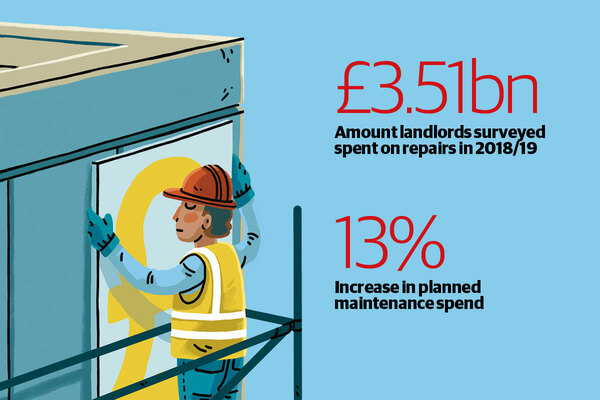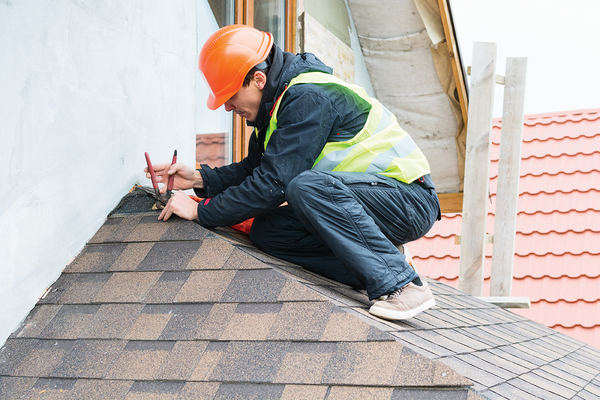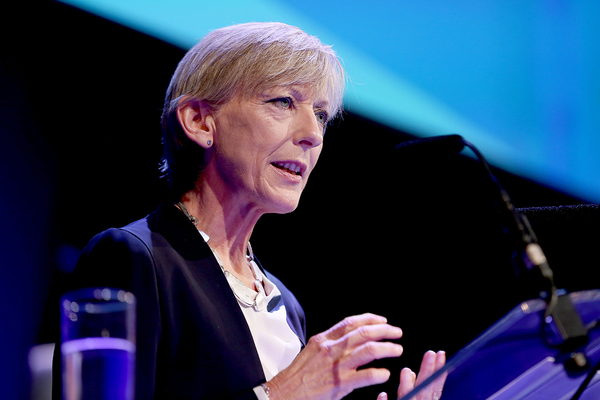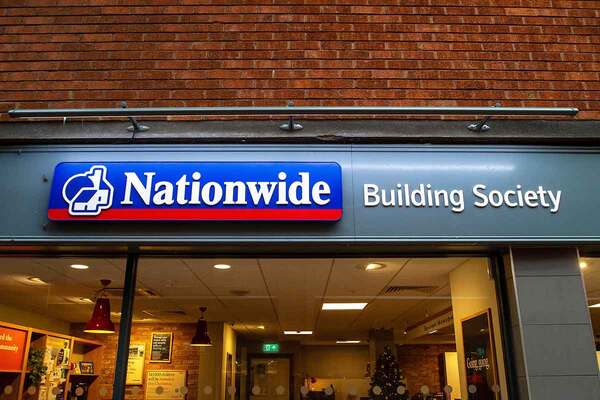You are viewing 1 of your 1 free articles
Escalating safety costs sees housing association spend on repairs and maintenance jump by 7.7%
Housing associations’ spend on repairs and maintenance grew by 7.7% last year with spending on safety measures eating into organisations’ budgets, exclusive research from Inside Housing can reveal.
According to Inside Housing’s annual repairs tracker that analyses the spending patterns for 218 housing associations in England, landlords spent a total of £3.51bn in the 12 months up to April 2019, up from the £3.25bn spent in the previous 12 months.
This increase saw housing associations spend almost 6% more on routine maintenance, 13% more on planned maintenance and just over 5% more on major repairs.
Many attributed the increase to having to carry out more work to ensure homes are safe, particularly in light of the Grenfell tragedy in 2017, with a number reporting increased workloads to improve fire doors, sprinkler systems and removing potentially flammable cladding.
Experts suggested the sector would continue to see a rise in repairs and maintenance spending while changes to safety legislation is updated.
Jon Slade, director at Campbell Tickell, said: “Organisations are taking a position on health and safety and looking at their resources and having to spend money that three years ago they had no idea they would have to spend.”
Mr Slade said that housing associations are being forced to reassess their discretionary spending to meet the extra costs or decide whether to conduct major repairs less frequently.
“We might still be two years away from having the level of clarity [about fire safety requirements] that we thought we would have two years ago,” he added.
Among the G15, the 12 largest housing associations in London, spending on planned maintenance rose more rapidly than the wider group analysed, increasing by almost 31% on the previous year, although spending on routine maintenance rose only 3.3% and major repairs spending fell 2.4%, compared with the previous year.
Much of this will be down to the increase in fire safety costs. In a report by the group last year, it predicted that fire safety repairs could cost its members £6.9bn.
Shaun Kelly, head of technical and compliance at Altair, said: “The increase in repairs and maintenance spending is a trend that is set to continue.
“It will be a combination of catching up with repairs that were deferred when the rent reduction was first introduced, new exceptional items associated with fire safety following the Grenfell fire tragedy, and work to combat climate change.”
He said that a number of associations are trying to be more efficient by using procurement clubs to reduce costs and do planned and cyclical repairs rather than responsive repairs, for example.
He added: “The challenge will be, particularly around building safety, that the exceptional item expenditure is likely to be significant and it’s clear it will have a profound impact on the cost base of associations.”











